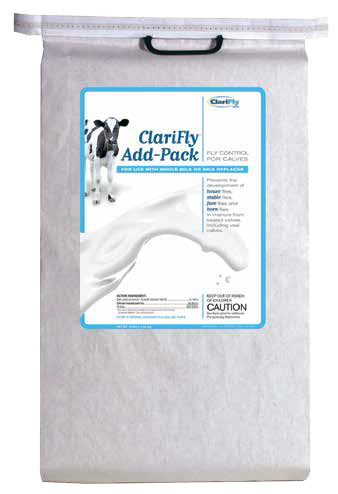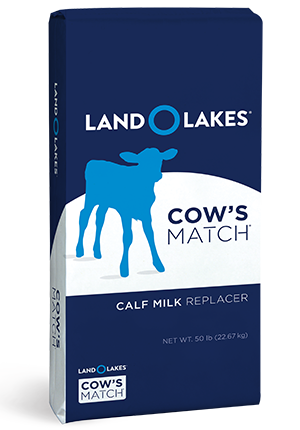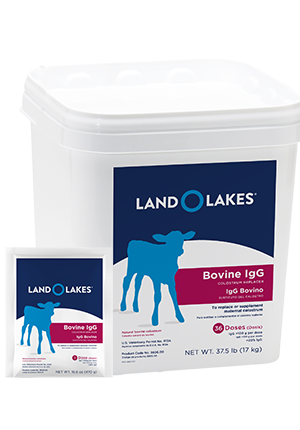
Early Calf Care and Nutrition Are Key for Dairy-Beef Crossbred Growth and Performance
Calf : Calf Nutrition
Calf : Dairy-Beef Cross

Over the last several years, many dairy producers across the country have bred a percentage of their dairy cow herd with beef semen to produce dairy-beef crossbred calves intended for beef. This practice has mainly been a way to diversify producer income in a volatile dairy market. Now, with record-low native beef herd numbers and a growing demand for high-quality beef, dairy-beef crossbred programs also have the opportunity to stabilize the beef supply, if done right.
Research has shown that early calf care and nutrition can have a significant impact on the future growth and performance of a dairy-beef crossbred calf. Proper calf care and nutrition in the preweaning phase are the foundation of a successful dairy-beef crossbred program that produces a high-quality product for consumers and it starts before the calf is born.
Similarly, if the calf is fed a restrictive diet or a diet low in essential nutrients, it is a challenge to make up for the loss in growth potential. Neonatal nutrition, like calf care, can impact overall quality grade. Additionally, when the calf is young and as they grow, they lay down fat cells in the muscle tissue, which is the development of intramuscular fat or marbling. Marbling is the fat component that gives beef its flavor. When the animal is fed a restrictive or low-quality diet, the body cannot appropriately produce and lay down fat cells, leading to a poorer quality grade. So, feeding a higher plane of high-quality nutrition in the preweaning phase is very important for muscle growth and overall performance.
Regardless of the origin, U.S. consumers want to eat high-quality beef. As a producer, by focusing on early calf care and nutrition, you can maximize your calves' growth and performance potential to develop higher quality animals that can help stabilize the beef supply while increasing your operation’s profitability.
References:
1 Schneider MJ, Tait RG, Busby WD, Reecy JM. An evaluation of bovine respiratory disease complex in feedlot cattle: Impact on performance and carcass traits using treatment records and lung lesion scores. J. Anim. Sci. 2009; 87:1821-1827.
Research has shown that early calf care and nutrition can have a significant impact on the future growth and performance of a dairy-beef crossbred calf. Proper calf care and nutrition in the preweaning phase are the foundation of a successful dairy-beef crossbred program that produces a high-quality product for consumers and it starts before the calf is born.
1. Cow care and comfort
The first step the ensure your calves are given the greatest chance to reach their maximum potential is to care for the pregnant cow. Shortly before the calf is expected to arrive, move the cow to a clean, dry and sanitized calving pen to give birth. Make sure the pen is freshly bedded and that plenty of clean water is available for the cow. Ideally, as the cow labors, someone should be around to assist in case of any birthing complications.2. Calf care in the first 48 hours
Just like your replacement heifers, the first 48 hours of a dairy-beef calf’s life are crucial. Immediately after birth, make sure to remove the calf from the calving pen into a clean, dry nursery and dip the navel in an iodine solution. Within the first hour after birth, feed at least one gallon of high-quality colostrum to provide antibodies to help protect the calf from disease early in life. Additionally, practicing good hygiene and reducing stress when transporting can all help get your calf off to a strong start and reduce future performance losses.3. High-quality neonatal nutrition
Optimal nutrition in the neonatal stage is critical for growing a consistent, healthy and efficient dairy-beef crossbred animal. Once the calf receives nutrient-rich colostrum, a high-quality milk replacer should be introduced. By feeding crossbred calves a higher plane of milk replacer with at least 20% protein at 1.8 lbs. per day, producers will see better performing calves and decreases in cost per pound of gain compared to calves fed a lower plane of nutrition, i.e., 1-1.2 lbs. of milk replacer per day. Similarly, a high-quality starter ration composed of 22% protein should slowly be introduced. Offering both milk replacer and starter feed in tandem improves overall pre-weaning efficiency and sets them up for optimal performance and efficiency post-weaning.4. Offer clean, fresh water regularly
Offering clean, fresh water to dairy-beef crossbred calves regularly boosts overall calf health by supporting the immune system, digestive function and other vital organ systems function. Keeping calves well hydrated is very important to maintain optimal growth and performance efficiency.5. Lengthened preweaning phase
When it comes to weaning, dairy-beef crossbred calves are more efficient and perform better when given a longer preweaning phase of at least 8 weeks. When a calf eats high quantities of starter feed too early in life, it can lead to damaged gut tissue. So, extending the preweaning phase from 49 days to 56 days and feeding a high plane of milk replacer encourages the calf to ease into starter feed. Feeding the same starter feed until about 12 weeks old will lead to continued efficiency, muscle growth and performance in the post-weaning phase and ultimately throughout the rest of the calf’s life.Why is this important?
The end goal of raising dairy-beef crossbred calves is to produce a consistent, heavily muscled calf that will contribute high-quality protein to the food supply chain. Knowing this, producers must focus on supporting weight gain and muscle growth. Research has proven that early calf care and nutrition determine the calf’s future growth and performance potential. If the calf’s birth is mismanaged, we can expose them to bacteria and viruses that can lead to illnesses, such as bovine respiratory disease (BRD) and other recurring health challenges that can negatively impact calf growth and performance, specifically average daily gain (ADG) and carcass quality, which are important performance indicators for crossbred calves. For every individual case of BRD, the calf’s quality grade is impacted by one-third of a grade point and ADG is decreased by .10 lb./day.1 Once the calf is exposed to disease-causing pathogens, it is difficult to reverse as the calf grows. That’s why calf care is critical at birth and throughout the preweaning phase.Similarly, if the calf is fed a restrictive diet or a diet low in essential nutrients, it is a challenge to make up for the loss in growth potential. Neonatal nutrition, like calf care, can impact overall quality grade. Additionally, when the calf is young and as they grow, they lay down fat cells in the muscle tissue, which is the development of intramuscular fat or marbling. Marbling is the fat component that gives beef its flavor. When the animal is fed a restrictive or low-quality diet, the body cannot appropriately produce and lay down fat cells, leading to a poorer quality grade. So, feeding a higher plane of high-quality nutrition in the preweaning phase is very important for muscle growth and overall performance.
Regardless of the origin, U.S. consumers want to eat high-quality beef. As a producer, by focusing on early calf care and nutrition, you can maximize your calves' growth and performance potential to develop higher quality animals that can help stabilize the beef supply while increasing your operation’s profitability.
References:
1 Schneider MJ, Tait RG, Busby WD, Reecy JM. An evaluation of bovine respiratory disease complex in feedlot cattle: Impact on performance and carcass traits using treatment records and lung lesion scores. J. Anim. Sci. 2009; 87:1821-1827.




